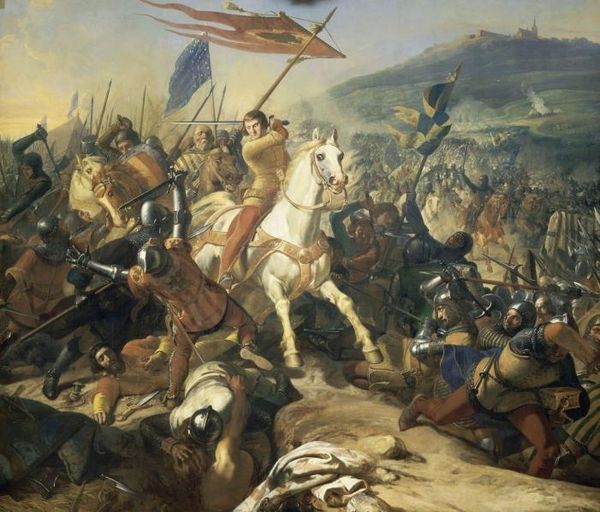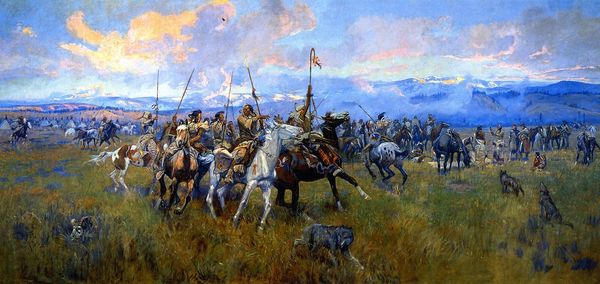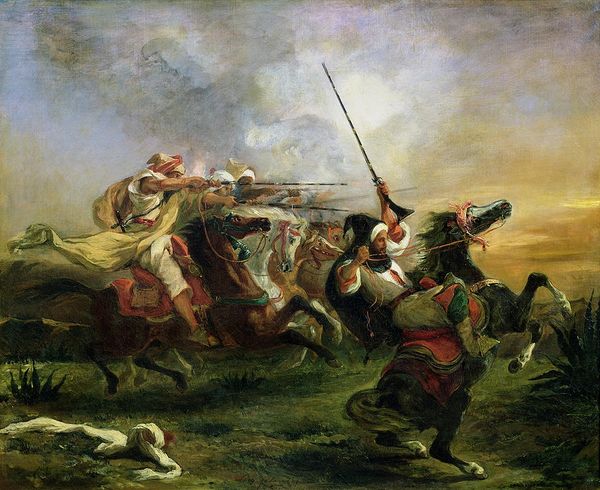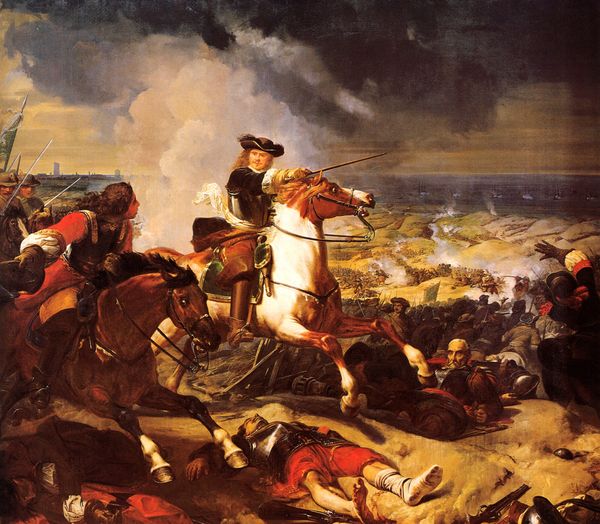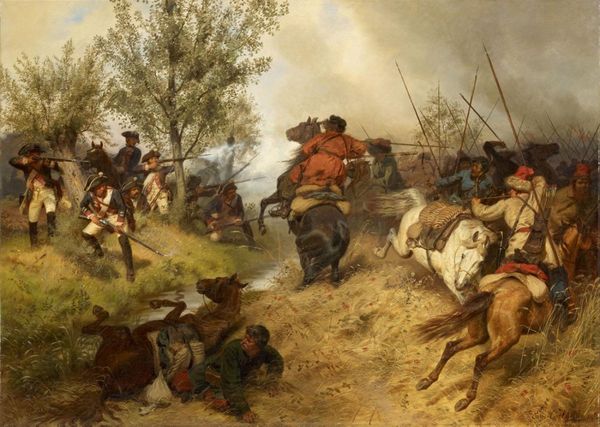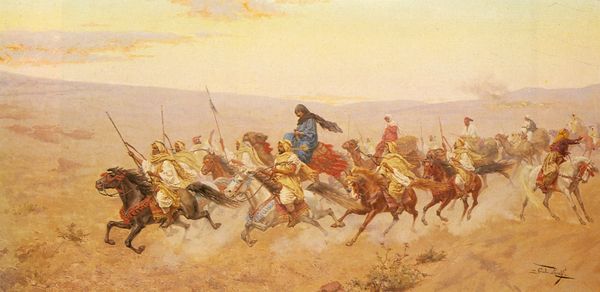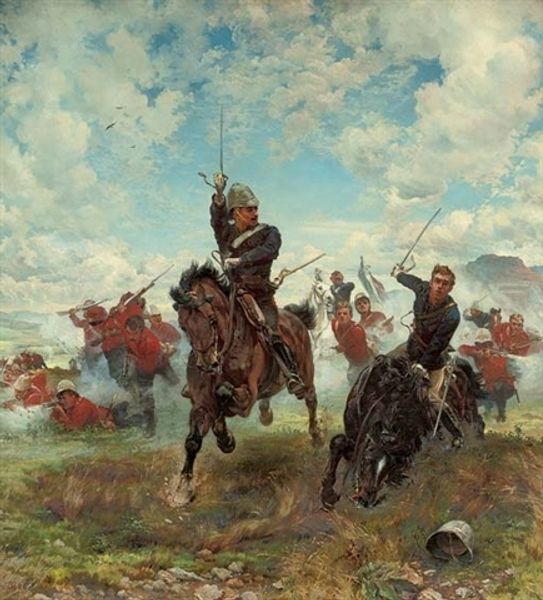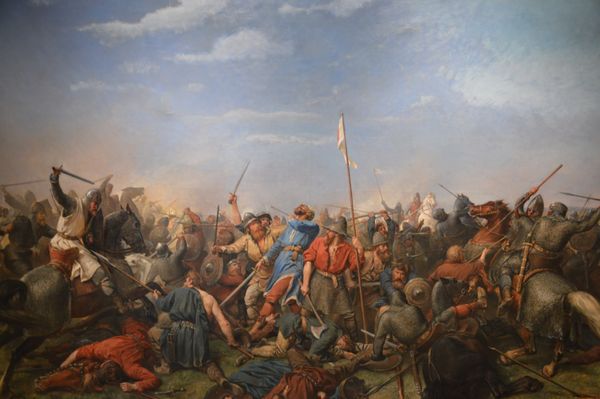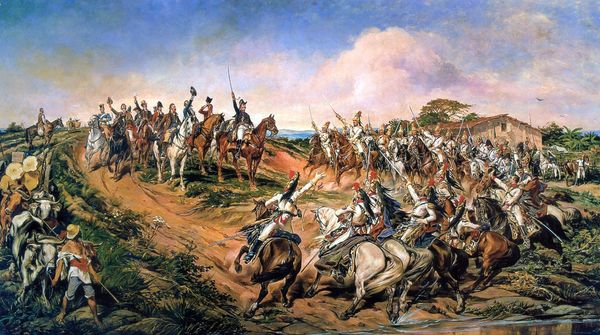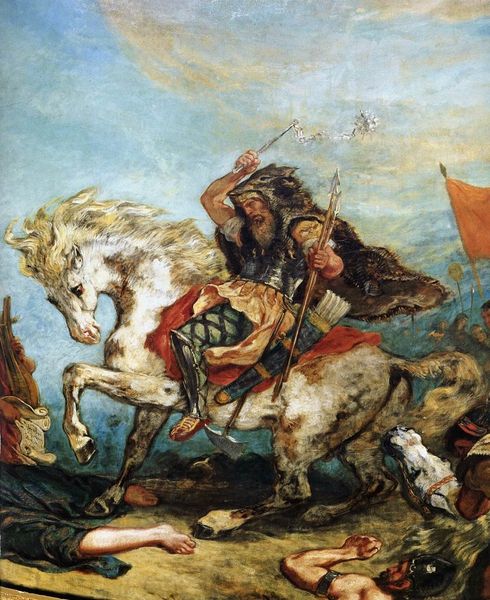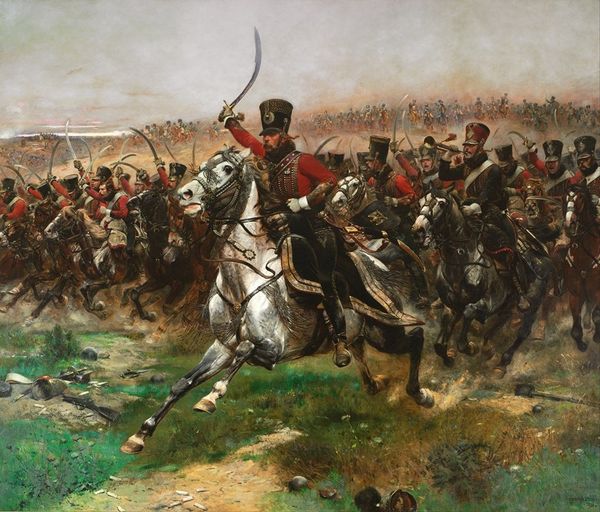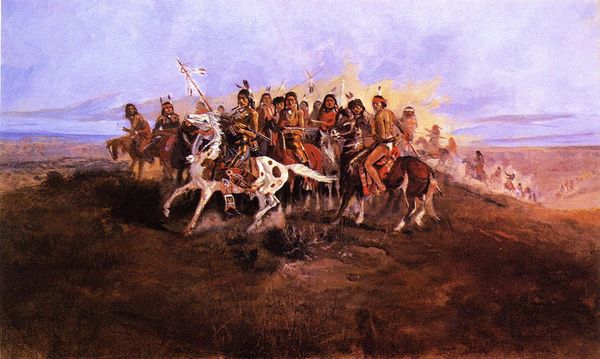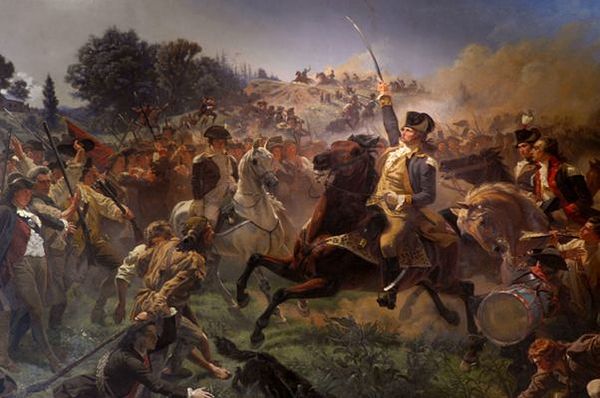
painting, oil-paint
#
painting
#
oil-paint
#
landscape
#
figuration
#
oil painting
#
history-painting
#
realism
Copyright: Public domain
Editor: We're looking at "Vuelvan Caras," an oil painting by Arturo Michelena from 1890. It feels incredibly dynamic, almost chaotic, with all these figures on horseback charging forward. What do you see in this piece, particularly considering its historical context? Curator: I see a powerful visual narrative deeply embedded in Venezuelan history and national identity. The painting depicts a pivotal moment during the War of Independence, specifically Páez's daring reversal at the Battle of Las Queseras del Medio. What's crucial here is to examine whose stories are being told and from what perspective. How does Michelena frame this moment of supposed triumph, and for whom? Editor: That’s a great point. So, it's not just a straightforward depiction of a heroic battle? Curator: Exactly. It’s vital to consider Michelena’s positionality as a Venezuelan artist trained in Europe, painting this scene years after the event. His work is inevitably shaped by prevailing ideologies, artistic conventions, and the political climate of his time. It raises questions about the construction of historical narratives and how they serve particular interests. Do we see, perhaps, a romanticizing of war that excludes the experiences of marginalized groups who might have suffered most acutely? Editor: I never considered it from that perspective, thinking about whose voices might be missing from the canvas. Curator: Think about it – who are these men? Who were they fighting for, and at what cost? It invites us to question the very notion of heroism and national identity, understanding it’s often built on complex layers of power, privilege, and exclusion. The swirling composition, dramatic lighting… these elements, while visually captivating, also contribute to a mythologizing of violence. What is glorified, and what is silenced? Editor: This has definitely broadened my understanding of the painting. I’m now thinking about how we need to critically analyze these historical depictions. Curator: Precisely. It’s not about dismissing the painting's artistic merit, but about engaging with it in a way that acknowledges its inherent biases and silences, promoting a more nuanced and inclusive understanding of history.
Comments
No comments
Be the first to comment and join the conversation on the ultimate creative platform.
